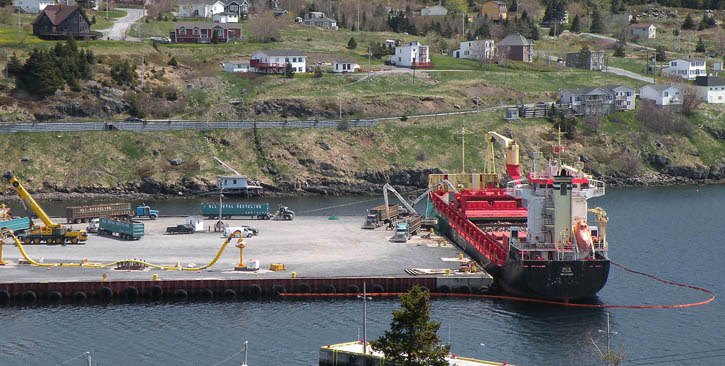VICTORIA – I’ve just spent two weeks viewing events from the opposite side of Canada, in and around St. John’s Newfoundland. It’s the same country, but you wouldn’t know it sometimes.
Here on the West Coast, “kayaktivists” paddled around a Shell offshore oil drilling platform being serviced at Seattle, striking poses of resistance for the media from their petroleum-based watercraft.

Meanwhile at Bull Arm outside St. John’s, work continues on a massive “gravity-based structure” that will soon be drilling into the Hebron oilfield 350 km offshore. It will have living quarters and drill rig above and a tank with capacity for 1.2 million barrels of crude below.
Offshore oil has turned St. John’s into a boomtown. With one industrial park nearing capacity on the edge of town, a second is under construction. Locals call it “Dannyland,” after its developer, former premier Danny Williams.
St. John’s Airport is buzzing with flights back and forth to Edmonton and Fort McMurray, and crew helicopters shuttling back and forth from offshore oil rigs. Tourism is picking up, with a new cross-Canada ad campaign and WestJet starting service to Dublin and London.
A foreign supplier won a contract for tankers to bring oil ashore. With no media-connected environmental groups to steer the subject to far-fetched disaster scenarios, debate in the Newfoundland and Labrador legislature turned to concerns about maintaining local employment.
Outside the city, parallels with B.C. become evident. Tiny towns struggle to hang on as young people choose opportunity over isolation, and the only expansion is at church graveyards. While cities struggle with high housing and recreational property costs, homes in remote areas are going for a song.
Up north in Labrador, a hydroelectric dam at Muskrat Falls is under construction. Its $8 billion estimated price tag is in the same range as BC Hydro’s Site C project on the Peace River, which will part a sea of protesters and lawyers and move ahead this summer. Nalcor Energy, Newfoundland’s electrical utility, is dipping into contingencies in an effort to keep it on time and on budget.
Here on the Left Coast, enviros and the Green Party rail against hydro as well as oil and gas, and of course you can’t even mention nuclear. Climate activism proceeds in a logical vacuum in these parts, as it often does in Europe.
Prime Minister Stephen Harper signed on to a farcical “carbon free in 85 years” pledge at the G7 meeting in Germany. But hey, it’s an election year, not a time for serious discussion of issues.
Imperial Oil’s Kearl oilsands mine at Fort McMurray has started production from its $9 billion second phase, with the help of many Newfoundlanders. Production continues to grow, heavy oil prices have surged with paving season, and large-scale liquefied natural gas export plans begin to take shape in B.C.
With the legislature about to be recalled to endorse the Petronas-led LNG export project, Premier Christy Clark has assembled a climate action team with representatives from industry, First Nations, local governments and a couple of professional protesters for good measure.
They have an absurdly short deadline to recommend changes to B.C.’s token carbon tax, as gasoline consumption returns to pre-tax levels despite continued high pump prices.
In St. John’s, another long, cold winter has finally loosened its grip after piling snow to doorknob levels. Every street in sight is being patched and repainted.
The debate about new energy supplies has a more serious tone in Newfoundland. The last elected premier, Kathy Dunderdale, lost her job in the wake of winter power blackouts.
Tom Fletcher is legislature reporter and columnist for Black Press. Twitter: @tomfletcherbc
